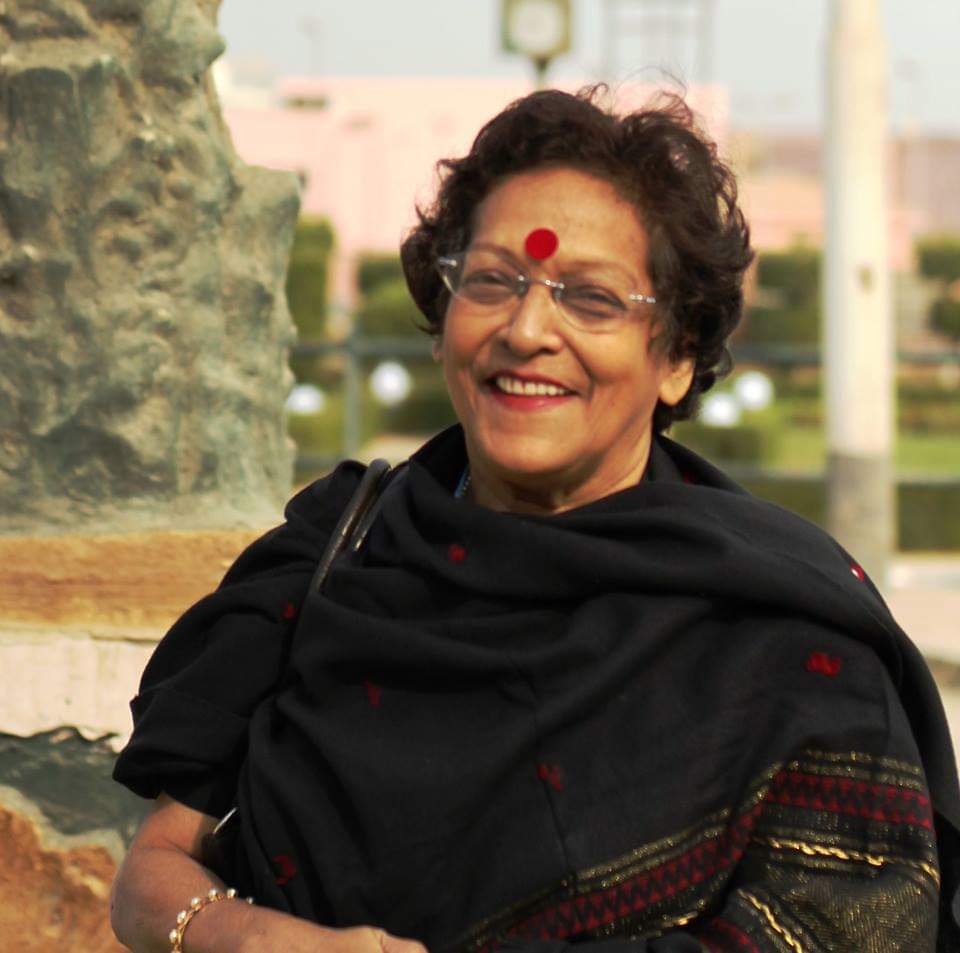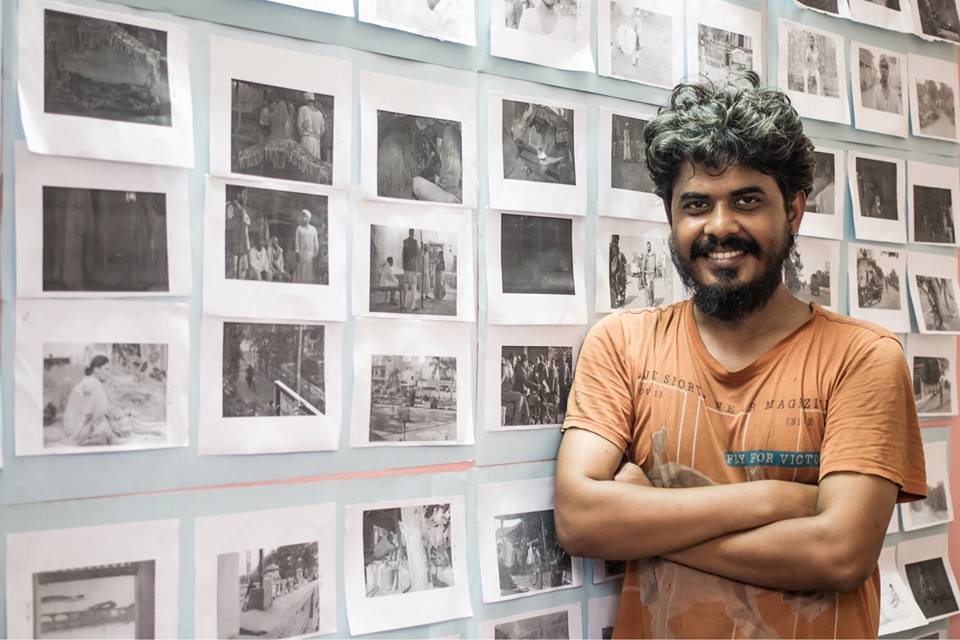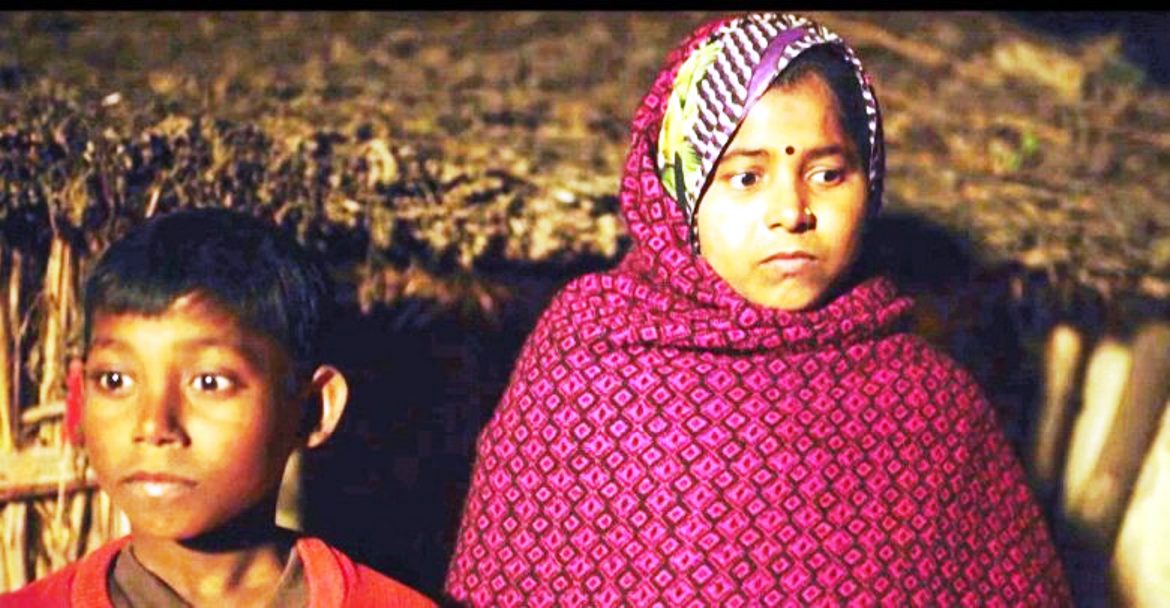Life of an Outcast is not a documentary film. It is an 80-minute-long feature film that will keep you glued to the screen. It will neither move you to tears, nor make you want to look away. It will shock you by the long tracks of silence dotted with the natural soundscape of chirping birds, crowing chickens, the chanting of the Ramayana floating in the distance, a single song playing of the tragedy of being born a girl; highlighting the tragedy of being born an outcast that you cannot wipe out across two generations, or with education, or with your silent rebellion.
The story


32-year-old Pawan Srivastava who comes from an upper-caste Hindu family, offers a deep insight into the tragedy of being born Dalit. The three main characters – a middle-aged man, his wife and their son are not given any names as a sign that the names of the Dalit do not matter because their lives don’t. Yet, we see the father trying to untangle fishing net from the waters that probably do not belong to him, or, carry head loads of human shit to unload it somewhere in the distance, or, cycling through the winding roads lined with trees on either side to reach the city to cut wood to eke out a living if one can call it ‘living’. He works on construction sites too.
The wife spreads red chillies on a mat to dry, grown on the land that they have taken on rent from the landlord, but the produce is again taken away by the same landlord. The wife keeps grumbling about the scarcity of water not resolved by the installation of the pump, but the husband keeps quiet because he has no money to install a pump.
And thus the film rolls on, never showing the older Dalit’s face clearly as if he is a microcosm of all Dalits everywhere whose faces do not matter, as they are faceless and nameless among the upper caste village they live in. The entire film was shot in Usri which is in Unnao District of Uttar Pradesh, and is 100 km from Lucknow. It is an upper caste-dominated village with a segment of Dalits who live in inhuman conditions. Brahmins have a stronger voice there.
“As a person I strongly believe in social justice and am unconditionally against any kind of discriminations, so when it comes to films I believe that Indian cinema should be inclusive, and it should include all the voices. In Indian cinema Dalits are marginalised, so as a filmmaker I took it as my responsibility to raise their voice through cinema,” says Pawan, who struggled for two years to collect funding, till he found enough resources through crowd-funding to complete the film.
“The poor have no caste”

Life of an Outcast fluidly moves back to small flashbacks, coming back to the present, each of which sheds light on the varied shades of oppression, torture, and insults the Dalits must live through. One of them shows the farmer as the newly married young husband having brought his wife who arrives in a palanquin, and recedes to the inner quarters of the house. But when she hears that her first night must be spent with the village landlord, according to “custom” which ordains that her virginity belongs to the landlord, she comes out of the sanctum sanctorum and puts her foot down, saying that she will not sleep with the landlord, never mind what the consequences are. They are told that in that case they will have to leave the village. The camera cuts to a long shot showing the young couple in silhouette in the distance, walking away from the village.
Another flashback shows the son, now a Mathematics teacher in the local school, as a small child being taught in a pathshala. As he grows up, he has to work on the farm and do other mundane work, and then sit down to study. The soundtrack fills up with what the teacher tells him, “Go sweep the compound, it will strengthen the muscles of your arms. What will you do learning English?” He comes home tired, but his father, then a younger man, tries to drill into him the power of education. Later, the boy is seen sending up a prayer stating, “Please make my teacher understand that learning English is very important for me.” He then asks his father, “What is our caste, Daddy” and his father says, “The poor have no caste, my son.” This spells out the philosophy of the film. It passes judgement on the fact that running away from the ancestral village to carve a new life, or getting the son educated enough to become a teacher of Mathematics in the local school, have worsened their human condition, instead of improving it.
While the father has tried to make peace with the condition, his life is reduced to nothing, he has taught himself the magic of survival – silence. He hardly speaks at all when the young boys tease him and poke him on his rides to the city to find work. He keeps silent at the corner tea-shop everyday on his way back for a cup served in an earthen pot, but does not comment on anything that the chaiwallah says. The chaiwallah is the self-appointed political commentator on Trump and the government, and the tussle between China and Japan, and the moral decay in girls wearing tees and trousers, and also on how Facebook and WhatsApp are destroying the moral fabric and the culture of the society. But the older man is always silent. The tea-shop has another regular customer, a crazy young man who feeds, plays with, and enjoys the company of imaginary birds that do not exist. This is a small surrealistic touch that enriches the humane texture of the film.
The son who has joined as Mathematics teacher in the local school, is arrested within a month for not writing “Om” on the blackboard before beginning his lessons, and is also accused of his students against the Ramayana! His father works doubly hard to earn the bail money. He gets bail but loses his job and says that it is more complex to understand caste than to teach Mathematics. When placed behind bars, the son keeps quiet when the policeman lectures him on the need for “adjustment”, and his retort is – “You people are jealous because we are educating ourselves to break away from the dirty work you force us to do.”
Explaining whether Pawan went through any ideological conflict as he was making a film on the Dalits being upper-caste himself, he says, “I do not believe that only a Dalit should make a film on their community. I take it as my social responsibility as a filmmaker to talk about their agony and their struggle. When people across the community show their solidarity with the oppressed class, then alone can we dream of a casteless society. The film is fictional, but the ground it is laid on is very much real.”
The desperate poverty the family lives in is suggested rather than told. The backdrop shows the onset of winter, but the older man wears a sweater filled with holes, an old pair of baggy trousers, and sometimes his wife hands him a shawl before he sets out before daybreak, and the fog still dogs the landscape. The home is an apology of living space where in one touching scene, the wife gets up from her narrow bed and squeezes herself beside her sleeping husband and draws the covers on herself. The daughter-in-law who never utters a single word during the entire film has a skeletal frame, and her mother-in-law mutters to herself whether the girl eats at all. Why, doesn’t she know?
The film is open-ended because Pawan believed in not forcing a closure and allow things to flow organically in the film. “I did not want to influence the story in any way, so I allowed it to be organic and as close to reality as possible. The oppression and struggles of the Dalits are organic in nature, so I thought that an open-ended story could do more justice to the subject,” he sums up.

